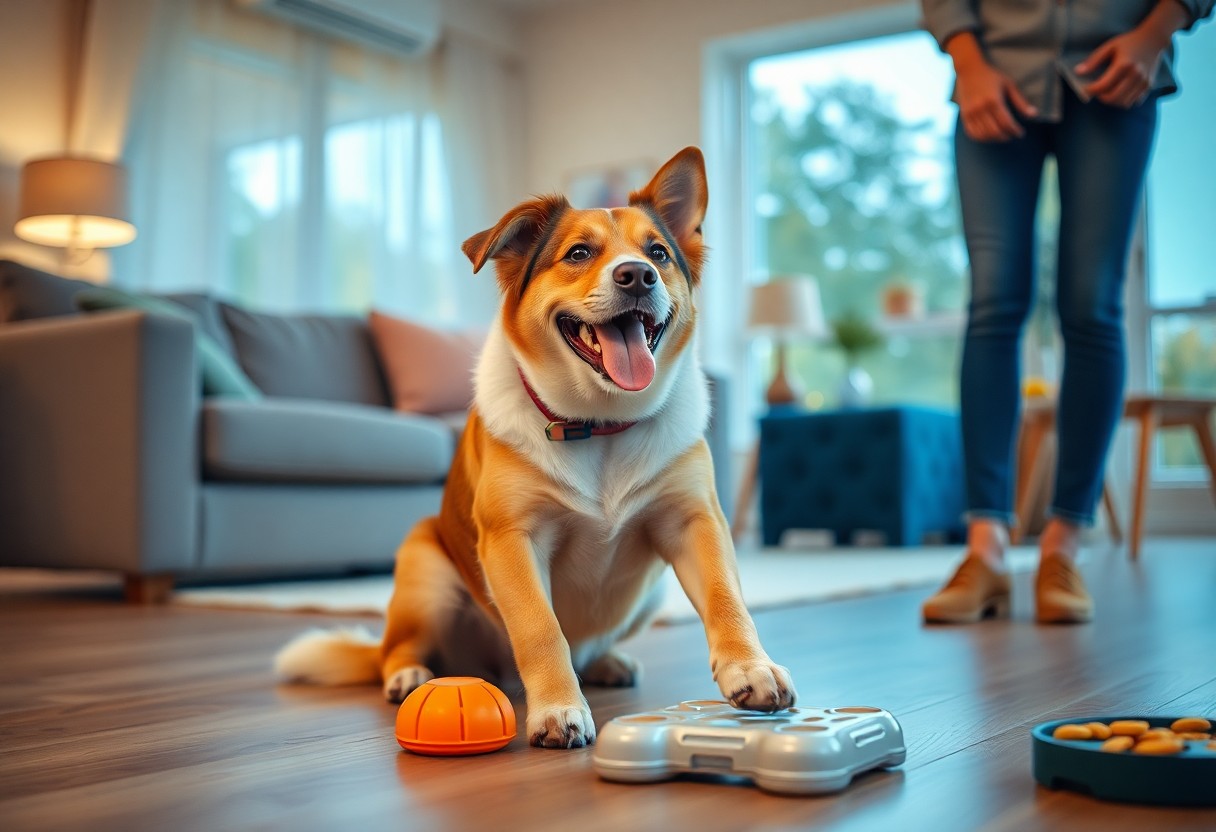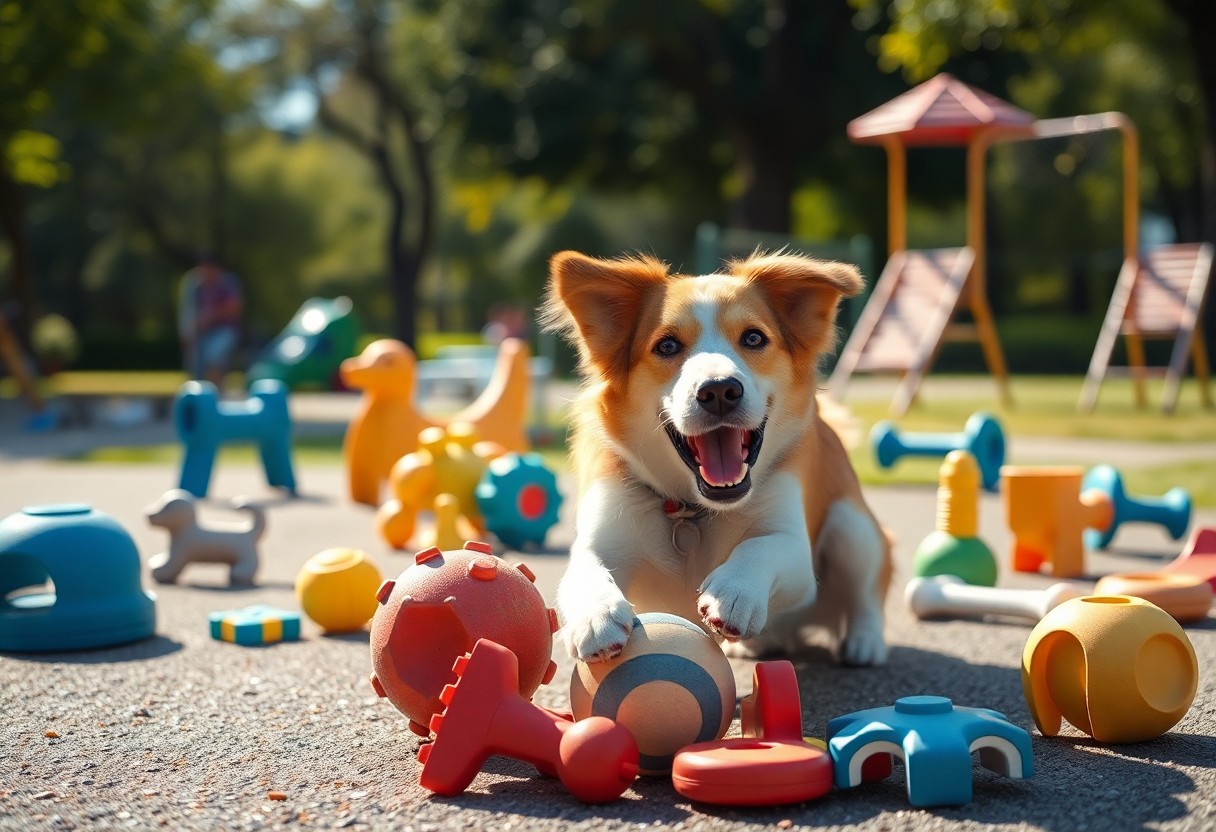You can effectively manage their energy levels by providing ample exercise and mental stimulation. Engaging activities like training, solving puzzles, and using interactive toys can keep them occupied and prevent behavioral issues. By tailoring your approach to their individual needs and energy levels, you will create a more balanced environment that encourages both physical activity and cognitive challenges. This balanced routine not only satisfies their natural instincts but also enhances your bond, ensuring a happier, healthier life for both you and your pet.
The Science of Energy Regulation
Understanding how energy levels are managed in your pet involves both biological and environmental factors. Energy regulation depends on their metabolic processes and how effectively they utilize energy. Factors like breed, age, size, and health all contribute to their overall energy needs. Implementing proper routines can enhance their well-being, ensuring your pet remains content and healthy throughout the day.
Understanding Physical Activity’s Role
Physical activity is vital for maintaining your pet’s optimal energy levels. Regular exercise helps burn off excess energy, keeps their muscles toned, and promotes cardiovascular health. Engaging in activities like walking, running, or playing fetch not only offers numerous physical benefits but also aids in behavior management. Aim for at least 30 minutes to 2 hours of exercise daily, depending on your pet’s specific needs.
Mental Stimulation: More Than Just Fun
Mental stimulation goes beyond entertainment; it is vital for your pet’s cognitive health. Engaging activities such as puzzle toys, scent games, and training sessions can help prevent boredom and reduce destructive behaviors. By challenging their brains, you foster a sense of achievement and satisfaction. Incorporating these activities into your daily routine can significantly enhance their overall well-being and strengthen your bond.
Consider that dogs, for example, thrive on solving problems and learning new skills. Engaging them in activities that request focus, such as finding hidden treats or manipulating toys for rewards, stimulates their minds. Research shows that mental exercises are as important as physical ones, and a well-stimulated mind can lead to reduced anxiety and behavioral issues. Maintaining a balance between physical exercise and tailored mental challenges allows your pet to lead a more fulfilling and harmonious life.
Building an Exercise Routine That Works
Establishing a comprehensive exercise routine that caters to your dog’s specific needs can yield remarkable results in managing their energy levels. Start by factoring in their age, breed, and overall fitness level. Short, consistent sessions of varied activities are often more effective than sporadic long sessions. Consider splitting exercise into multiple smaller chunks throughout the day. For additional guidance, check out these Tips for Managing Puppy Energy Indoors to build a balanced routine that maximizes both physical and mental stimulation.
Tailoring Activities to Energy Levels
Your dog’s energy levels will fluctuate based on various factors, including age and breed. High-energy pups like Border Collies or Australian Shepherds demand more vigorous activities, such as running or engaging in fetch. Meanwhile, breeds with lower energy might thrive on leisurely strolls or gentle playtime. Adjusting the intensity and duration of activities based on your dog’s energy levels will keep them engaged without overwhelming them.
Incorporating Variety: The Key to Engagement
Engagement is key for keeping your dog physically and mentally stimulated. Introduce a mix of activities—including walks, swimming, agility training, or even canine sports—to prevent boredom and promote a well-rounded exercise routine. This variety ensures your dog is excited for their daily adventures, which can enhance their overall behavior and enjoyment. Rotating toys, locations for walks, and types of games further stimulate their minds, leading to a happier, balanced pet.
Activities should not only be varied in type but also in intensity and environment. For example, combining indoor games like hide-and-seek with outdoor excursions keeps your dog mentally alert and physically fit. Incorporating different surfaces—grass, sand, and trails—exposes your pet to new challenges, encouraging adaptability. Recognizing that dogs thrive in dynamic surroundings can lead to a significantly enriched exercise routine, keeping their energy levels manageable.
Elevating Mental Engagement
Fostering a stimulating environment enhances your pet’s cognitive skills, providing a balanced lifestyle that keeps them content and less prone to anxiety or boredom. Engaging your furry companion with varied activities encourages problem-solving, builds their confidence, and creates a stronger bond between you. Incorporate different mental challenges into their routine to ensure their minds stay sharp and engaged.
Choosing the Right Puzzles and Toys
Selecting engaging puzzles and toys tailored to your pet’s preferences and abilities is imperative for keeping them mentally stimulated. Look for options that vary in difficulty, starting with simple designs and gradually increasing complexity. Interactive toys that dispense treats or have hidden compartments can captivate your pet’s attention and challenge their problem-solving skills. Ensure the materials are safe and designed with your pet’s size in mind.
The Benefits of Interactive Playtime
Interactive playtime serves as an excellent method to channel your pet’s energy while reinforcing positive behaviors. Engaging with your pet through games like fetch, tug-of-war, or hide-and-seek not only keeps them active but also nurtures your relationship. These sessions release endorphins, promoting happiness and reducing stress for both of you.
Additionally, interactive playtime enhances your pet’s social skills, allowing them to respond better to cues and commands. Regularly dedicating time to these activities helps prevent behavioral issues and can improve training outcomes. Furthermore, it provides a fantastic opportunity for you to observe their personality, leading to deeper insights into your pet’s preferences and needs, ultimately creating a more harmonious home environment.
Creating a Balanced Lifestyle
A balanced lifestyle for your pet encompasses more than just physical exercise; it integrates mental stimulation and social interaction as well. Factors such as routine playtime, training sessions, and engaging environments contribute significantly to their well-being. By incorporating varied activities into their daily routine, you help them expend energy appropriately while also keeping their minds sharp, reducing stress and behavioral issues. Aim for a mix of outdoor adventures and indoor challenges for a well-rounded approach to their health.
Establishing a Consistent Schedule
A consistent schedule keeps your pet feeling secure and helps manage their energy effectively. Daily exercise, feeding times, and training sessions should occur at the same times to create a predictable routine. This predictability not only aids in their training but also ensures they know when to expect activity and rest, which can lead to a more balanced disposition overall.
Recognizing Signs of Overexertion
Being attentive to your pet’s behavior during exercise is necessary. Signs of overexertion include excessive panting, lethargy, or a noticeable decrease in interest in activities they usually enjoy. When you notice these signs, it’s vital to cut back on physical exertion to avoid potential health concerns.
Monitoring your pet actively during exercise allows you to gauge their limits. Look for signals such as slow movement, an inability to keep up, or frequent pauses to rest. If your pet starts to drool excessively or seems unusually disoriented, these can be warnings that they are pushing themselves too hard. Allow them ample water and break time, and consider adjusting their exercise regimen to ensure that it matches their energy levels, especially in warmer weather when heat exhaustion becomes a risk. Observing these signs enables you to customize their activity to safeguard their health while still providing sufficient outlets for energy.
Long-Term Strategies for Energy Management
Managing your pet’s energy levels over the long term requires a holistic approach that includes regular exercise, mental challenges, and lifestyle adjustments. Committing to a consistent routine can provide stability, ensuring that your furry companion remains engaged and content. Incorporating varied activities and new experiences can help maintain their enthusiasm and prevent boredom, which may contribute to excess energy. A proactive approach will help keep their energy manageable while ensuring they remain healthy and happy.
Promoting Healthy Sleep and Nutrition
Ensuring your pet has a balanced diet and a designated sleep schedule can dramatically impact their energy levels. High-quality foods that meet their nutritional needs, combined with proper hydration, support optimal health. In addition, a quiet, comfortable sleeping space aids in restorative sleep, allowing your pet to recharge effectively. Establishing a consistent feeding and sleep routine will contribute to better overall energy management.
Adapting to Age and Changing Needs
As your pet ages, their energy levels and requirements may shift significantly. Younger pets typically have higher energy levels that decrease as they mature. Tailoring your approach to their specific life stage is necessary. For elderly pets, consider gentler activities and exercises that accommodate any mobility issues. Providing mental stimulation through low-impact training or puzzle toys can also cater to their changing energy needs, helping them remain engaged without overexertion.
Recognizing that your pet’s energy levels will fluctuate with age allows you to adjust your strategies correspondingly. Senior pets might require shorter, more frequent walks or sessions of play that consider their physical limitations. Observing changes in behavior, such as increased fatigue or reluctance to engage in past activities, signals the need for adaptation. Prioritizing comfort and mental engagement can keep your pet active and fulfilling their energy needs while preserving their quality of life.
Conclusion
Conclusively, managing your dog’s energy levels is vital for their well-being. Providing plenty of exercise and engaging them with mental stimulation through training, puzzles, and interactive toys can significantly help. Incorporate various activities into your routine to keep them active and entertained. For more tips on enriching your dog’s life, explore these enrichment ideas for dogs. This approach not only satisfies their energy needs but also strengthens your bond with them.


